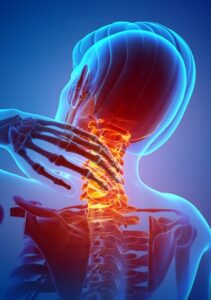We are frequently asked in practice, “What is a Baker’s Cyst?” or “What is the best treatment for Baker’s Cysts?”
People have often heard of the condition, but aren’t exactly sure what the symptoms are.
In essence, a Baker’s Cyst (sometimes also called a Popliteal cyst) is a fluid-filled swelling that develops at the back of the knee. It is named after the surgeon who first described it – William Morrant Baker in the 1800’s.
What are the symptoms of a Baker’s cyst?
So how do you know if you have one? Well, symptoms may include:
- Knee pain
- A painful calf
- Noticeable fluid around the knee joint
- Sometimes locking or clicking may occur
- Occasionally, you may get no pain at all- you can just feel a lump at the back of your knee.
What causes a Baker’s cyst?
Usually some sort of knee trauma or direct blow to the knee may cause this type of swelling. Often this may be due to a sports injury, but there are a number of other causes, such as osteoarthritis (joint wear and tear), Rheumatoid arthritis (a systemic inflammation of joints caused by the immune system attacking itself), or Gout (a specific type of reactive systemic arthritis which is caused by excess uric acid in the blood stream).
Who can get a Baker’s cyst?
Anyone! However, it is more common in males and people over 40 years old, although any age or sex can be affected.
What Baker’s cyst treatment is available?
There are several options.
Like any inflammatory problem, RICE protocol will help (Resting your leg, applying a wrapped Ice compress for 10 minutes each hour, keeping it Compressed with a tubigrip bandage, and keeping your leg Elevated).
Simple over the counter anti-inflammatory medication and pain killers may also help, however, it is important to determine the underlying condition causing the swelling and to ideally treat this.
Using crutches may be necessary to get about until your symptoms ease. They help to take the weight off the affected leg while you are walking.
Rehabilitation to keep your knee joint moving and using strengthening exercises to help the muscles around your knee may be helpful. Ask your osteopath for help.
Prescription painkillers – usually a combination of paracetamol and codeine – can be used to control any pain. See your GP for a prescription.
Occasionally your GP may refer you to an orthopaedic knee surgeon to drain the cyst or remove it. If your doctor uses a needle to drain excess fluid from your knee joint to help to relieve your symptoms, remember that it is common for the Baker’s cyst to re-form over time as the underling cause has not been addressed.
Can the Baker’s cyst rupture?
Yes – but only in rare cases, often following another trauma. In these cases, the fluid within the baker’s cyst my leak into the calf, causing the pain to become more acute. You may also get some redness and swelling in the calf, so it is important to seek medical advice as this can mimic the symptom pattern of a Deep Vein Thrombosis (DVT), which requires urgent attention. The fluid will gradually be reabsorbed into the body within a few weeks.
When should I get treatment for Baker’s cyst?
Mild symptoms may settle by following the simple home-based treatments listed above, but if the swelling is persistent and causes you significant discomfort, you should see an osteopath or physical therapist for advice and treatment.
Our team of osteopaths at Back On Track Healthcare in Surrey and South West London are on hand to examine you. You can call our friendly reception team on 020 8545 0965 to book a consultation or ask to speak to a qualified osteopath.
They will ask you questions about your complaint and some general health screening questions to ensure that treatment is safe and appropriate. You will then have a physical examination of the knee and surrounding tissues and joints so that your osteopath can formulate a diagnosis.
Treatment for Baker’s cyst usually involves some gentle joint manipulation, some stretching or massage of the soft tissues. We may also us an ultra-sound machine to further reduce the swelling.
Usually you will be asked to do some home exercises, before being seen again for a review of your symptoms a few days later.
Sometimes it may be necessary to refer you for further tests (e.g. ultra-sound or MRI scans) in order to rule out a more serious condition such as an aneurysm or tumour.
Medical treatment may involve you being offered a corticosteroid injection to reduce the swelling and inflammation caused by the cyst. It does not necessarily prevent it from coming back again.
Can surgery help my Baker’s Cyst?
If there is significant damage to the knee joint (e.g. by osteoarthritis or a torn ligament or cartilage), then surgery may be indicated. Normally this is done as a day-case, using a keyhole procedure called an arthroscopy, which allows the surgeon to look inside the knee with a camera to identify and fix any damage.
Surgery may remove the cyst, especially if a cyst is very large or painful and/or other treatments have not worked. Although usually a keyhole method is used to close off the connection between the Baker’s cyst and the knee joint, the cyst can also sometimes removed using open surgery.
Are there any useful Baker’s cyst exercises I can try?
A common place for the cyst to form is between the heads of two of your muscle tendons at the back of the knee (semimembranosus and the medial head of gastrocnemius). Usually we advocate the stretching of these muscles in the early stages of rehabilitation, then later on, strengthening of the calf, hamstring and quadriceps muscle groups. Your osteopath will guide you through the most appropriate programme for you and even when you are back to full fitness, we will suggest an “MOT” some months later to ensure you are still functioning at your best. See our “six step treatment formula”. If you would like more information on our clinics and the various conditions we commonly see, please visit our clinic website, or book and appointment online.





